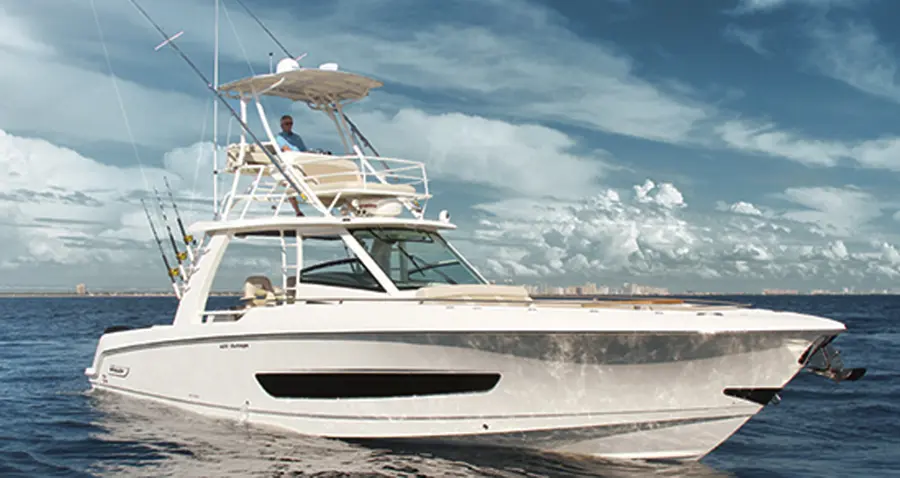

When asked for help with a new mold design for Boston Whaler, Florida-based Marine Concepts, a leading manufacturer of composite tooling, turned to Composites Consulting Group (CCG) and Diab for material and construction assistance. The project was finished in May 2014 and 16 months on, Boston Whaler are very happy with the results.
Three boats make one
Have you ever wondered how modern fiberglass boats are built? It’s a little bit like baking a cake. When constructing something as large as a boat, you need a mold to shape and support the materials until they solidify. So to build one fiberglass boat, you must in fact build two boats: the finished product and the mold from which it springs.
With a female mold, you normally build three boats to get one: first a male plug on which the female mold is formed, then the mold, and finally the boat itself. The larger the boat, the heavier will the mold be, of course. That is why many boat builders are turning to composite materials for their molds and tooling. Composite molds have also the advantage of being very durable.
Marine Concepts excels in composite tooling
Composite construction is far from novelty for Florida-based Marine Concepts – an extensive and experienced composites tooling, and fiberglass parts manufacturer in the United States and abroad. With more than 30 years of experience in plug and mold building, the company has a reputation for quality, performance and integrity.
Marine Concepts often assists manufacturers with new boat designs and with more than 400,000 square feet of engineering, CNC milling and production facilities, the company can handle everything from small molds for detail parts to larger molds for entire yacht hulls.
Teaming up with CCG
When contacted by Boston Whaler about a challenging new mold design, Marine Concepts turned for help with the infusion process to Composites Consulting Group (CCG), with whom they had worked with before.
–Boston Whaler’s changing production requirements made them investigate the viability of new, lighter tooling sets that would be easier to move around, says Dean Callander, Process Specialist at CCG.
Chris Wachowski, Boston Whaler’s Director of Product Development adds:
–One of the main drivers for creating the fiberglass hybrid tooling was to overcome facility constraints for hoisting heavier molds, as the size of our product has grown to 42ft.
Diab composites form the core
The main challenge was to complete the project in the required time frame. There was a large amount of material to handle. The hull mold required 8 plies of glass fiber reinforcement and 2 layers of 25 mm thick core material. The liner mold required the same amount of laminate and one single layer of core, but its geometry was very challenging, which made construction and infusion difficult.
–The build specifications were already in place and fast and efficient material delivery was crucial for the project, continues Dean Callander. Marine Concepts opted for Divinycell H200 and ProBalsa due to Diab’s ability to get the team what they needed in the compressed time frame.
Comprehensive assistance from CCG
Dean Callander worked with Marine Concepts at their premises through most of the construction process, including manifolding and infusion. Assisting him was Belle Blanding, who created the infusion manifold and utilized computer flow modeling to optimize the design from CCG’s office in Dallas, TX. Assisting Marine Concepts onsite was also Sam Casto, South East Regional Sales Manager at Diab.
The project was completed in May 2014 when the molds were delivered to Boston Whaler, whose engineers have completed trialing of the tooling, which has met their expectations.
Read more about Marine Concepts: marineconcepts.com/
